Remember WikiLeaks, the non-profit organization famed for its damning exposures of various governments and organizations worldwide? Or its famous founder, Julian Assange, who got in trouble with the U.S government for leaking confidential files in 2010? Assange is famous for releasing footage of the U.S military fatally shooting 18 civilians in Iraq. He obtained the footage from a U.S Intelligence insider and then worked for a week with a team of cybersecurity experts to decrypt it. Video encryption falls under one of the areas of cybersecurity, cloud security. Interested to find out more about cyber security? Here is a breakdown of this important system.
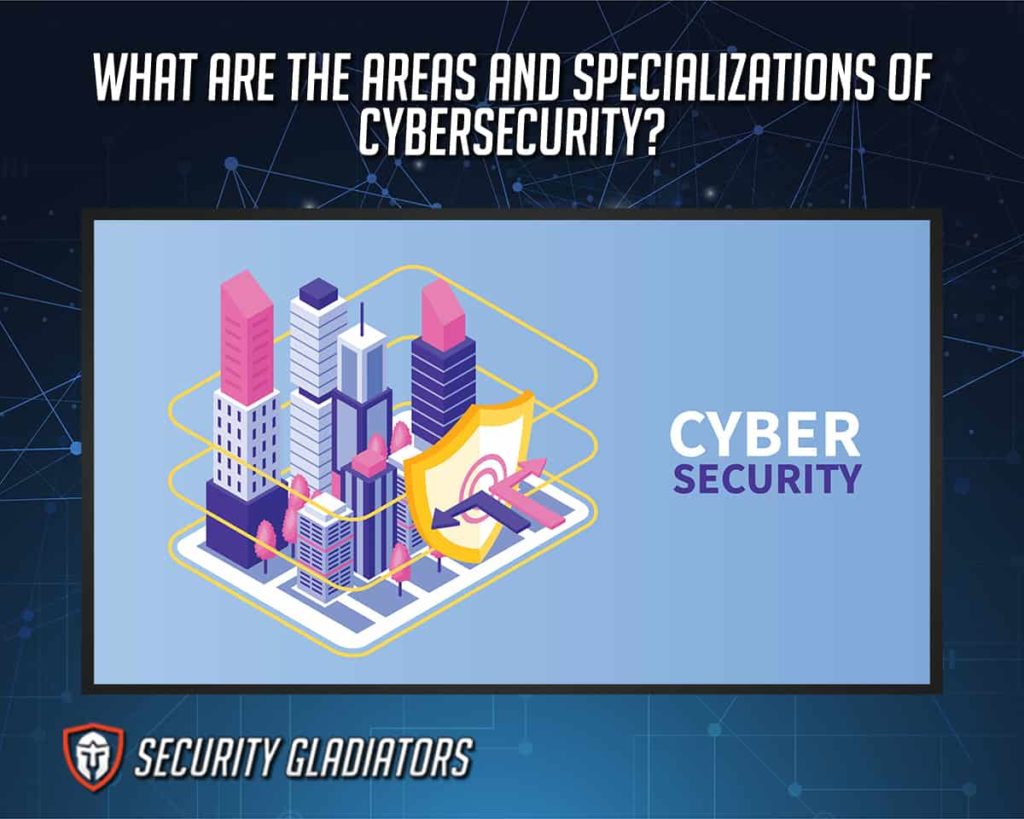
Video encryption is an important component of cybersecurity, specifically cloud security. Cybersecurity is the practice of protecting computers, servers, mobile phones, networks, and data from malicious attacks. The practice is very important, as it protects schools, financial institutions, and the government, among other entities that use cloud computing services to store critical data. Cybersecurity is a complex process whose users know the many benefits it could bring, including enforcing data privacy compliance with authorities for businesses. Cybersecurity also ensures that classified data intended for the government doesn’t land in the wrong hands and threaten national security. The term cybersecurity includes several areas and specializations, 10 of which are listed below and covered in more detail in this article.
- Cloud Security
- Data loss Prevention
- Application Security
- Incident Response and Forensic Analysis
- Network Defense
- Endpoint Protection
- Penetration Testing
- Internet of Things (IoT) Security
- Critical Infrastructure Security
- Secure DevOps
Table of Contents
1. Cloud Security
Cloud Security Definition: Cloud security is a platform that ensures the protection of data stored on cloud computing platforms.
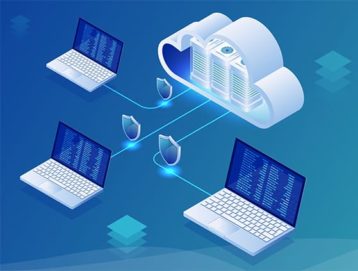
How it works: Cloud security protects data stored online from being leaked, stolen, or deleted by unauthorized third parties. The methods involved in cloud security include tokenization, firewalls, obfuscation, penetration testing, and the use of virtual private networks (VPNs). Avoiding public internet connections is also a key component of cloud security.
Aim: Protecting data that individuals or companies have stored online among other digital assets through cloud computing service providers.
Purpose: To use cloud security measures including data encryption, two-factor authorization (2FA), firewall services, and VPNs to protect data stored online.
Job Opportunities: Many institutions need cloud security services. Therefore, there are plenty of job opportunities in this field, and they include the following:

- Cloud engineer
- Technology projects lead
- Service engineers
- Cyber risk specialist
- Cloud administrator
- Cloud architect
- Cyber security consultant
To land a job in any of the above posts, one should have the necessary skills in cloud security operations like encryption, virtualization, and system configuration. Other necessary skills in this field include cloud architecture and identity/access management.
Tools: There are various tools in the market that help individuals solve cloud security challenges. They include:
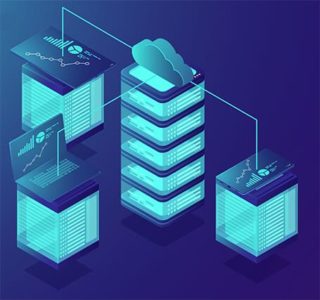
- CrowdStrike Falcon
- Cloudflare
- TOPIA
- Barracuda CloudGen Firewall
- Orca Security
- Zerospam
- Rubrik
- Zscaler
- Trend Micro Cloud One – Workload Security
- Splunk Enterprise Security
Importance: Cloud security is important because it protects firms against the risk of losing data, accidental exposure of confidential information, and violating privacy regulations. It also ensures that applications and data are readily available to permitted users. If any potential security issues arise, individuals can swiftly take action and mitigate the damage.
Main function: The main duty of cyber security is to protect confidential data from reaching unauthorized hands. Cloud security is based in cloud environments, enabling individuals to back up their information to cloud servers. This protects organizations’ data from malware, unauthorized access, distributed denial of service (DDoS) attacks, and hacking.
2. Data Loss Prevention
Data Loss Prevention Definition: Data loss prevention (DLP) is one of the cyber areas involving a system of tools to protect sensitive data from loss, theft, or misuse by unauthorized individuals.

How it works: DLP software classifies corporate institutions’ regulated, critical, and confidential data. The software also identifies privacy policy violations in companies within their predefined policy packs. They ensure that private data is protected according to regulatory compliance policies like HIPAA, GDPR, and PCI-DSS. If companies violate these policies, the software enforces correction through protection actions like encryption and alerts. These actions prevent the end-users of the data from sharing it, either maliciously or unintentionally.
Aim: Data Loss Prevention tools and software aim to monitor and control endpoint undertakings and sift through corporate network data streams. DLP also monitors the data in cloud storage while in use, at rest, or in motion.
Purpose: To protect data against being stolen and misused, identify weaknesses in incident response, and provide reporting in auditing and compliance requirements for organizations.
Job Opportunities: This area of cyber security has the following job opportunities for individuals:

- Cyber security incident response specialist
- Loss prevention investigator
- IT security engineer
- Third-party risk management assessor
- Inventory associate
- Computer specialist
Tools: There are numerous DLP tools that help individuals protect their data. They include the following:
- Secure Trust Data Loss Prevention
- SolarWinds Data Loss Prevention
- Trustifi Outbound Shield
- CoSoSys Endpoint Protector
- Check Point Data Loss Prevention
- Code42
- CrowdStrike Falcon Device Control
- Teramind DLP
Importance: DLP ensures the achievement of corporate objectives, including data visibility, personal information protection, and intellectual property protection.
Main function: DLP’s main duty is to safeguard confidential data from being accessed by unauthorized individuals.
3. Application Security
Application Security Definition: Application security is the implementation of security measures at the application level to prevent code or data in apps from being stolen.
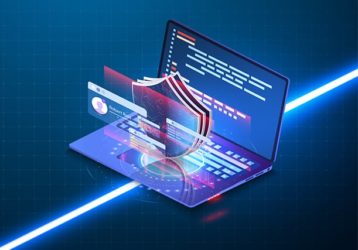
How it works: This is an application area of network security that includes procedures, hardware, and software that pin down or curtail security vulnerabilities. The security considerations involved happen during the design or development of an application. App developers also consider this aspect by encompassing approaches that help protect applications after they are established. Protection measures in application security include firewalls and an app security routine.
Aim: App developers use application security to protect apps from security vulnerabilities that threaten their functionality. They often do this by developing, adding, and testing the effectiveness of the security features found in the app.
Purpose: To prevent security problems that expose the apps to threats like unauthorized access or the modification of their features by hackers.
Job Opportunities: Notable job opportunities for individuals involved in this arm of cyber security include:
- Application security specialist
- Application and infrastructure security officer
- Web application developer
- Security architect
- Cyber and intelligence consultant
- Software engineer
- Technical security analyst
- Application support engineer
Tools: The following are some of the best application tools in the market:
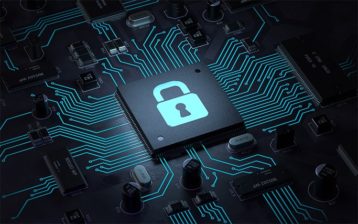
- Arxan Application Protection
- Burp Suite
- Checkmarx
- Black Duck
- CA/Veracode
- Fortify
- Klocwork
- Qualys Web App Scanning
- IBM Security AppScan
- WebGoat
Importance: Application security is important in the digital era, where most people access important services through mobile applications. These applications are often vulnerable to security breaches and threats because they are connected to cloud networks. Application security measures ensure that hackers don’t tamper with them, protecting the end-user.
Main function: The main duty of application security is to prevent the modification of applications through the unauthorized access of people with malicious intentions.
4. Incident Response and Forensic Analysis
Incident Response and Forensic Analysis Definition: Forensic analysis is one of the most important areas of internet security. It involves in-depth investigation and documenting the process, reasons, culprits, and effects of a security incident and how it contravenes the law.
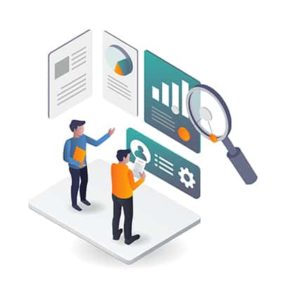
How it works: Forensic analysis operates through various technologies to investigate a criminal act, for instance, a homicide. Forensic specialists visit the crime scene, collect different types of evidence using electronic devices, analyze, and put the information on paper. They use this information to prevent evidence in court, often in criminal hearings. Computer forensics deals with cyber-crimes, and it involves the tracking of malware threatening to destroy systems in private or government institutions.
Aim: Retrieving evidence from tampered mobile phones, computers, and software to be used in litigation.
Purpose: To recover and analyze latent evidence retrieved from computer systems, wireless communications, storage devices, and networks using a combination of computer science and elements of the law.
Job Opportunities: With a computer forensics degree, individuals can land jobs in the forensics field, including the following:
- Forensic computer analyst
- Computer forensics investigator
- Information security analyst
- Security consultant
- Computer forensics technician
- Information systems security analyst
Tools: Some of the most common tools used in the different stages of forensic investigation include:
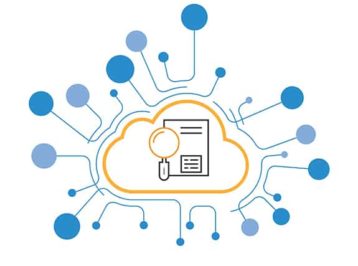
- Autopsy/the Sleuth Kit
- FTK Imager
- Volatility
- Registry Recon
- Cellebrite UFED
- WIRESHARK
- CAINE
Importance: The ability of organizations to practice strong incident response and computer forensic analysis ensures the sustainability and integrity of their network structures. Therefore, a company needs to have a forensic team that fully understands the technical and legal aspects of cyber forensics. The team will use their expertise to capture relevant information if hackers have compromised the network infrastructure of an entity. If the hackers are caught, the information also serves as evidence when prosecuted in a court of law.
Main function: To find, collect, maintain, and analyze data with integrity to be used in legal cases against cybercriminals.
5. Network Defense
Network Defense Definition: Computer network defense involves using computer networks to monitor, analyze, protect, detect, and respond to unapproved activity. Computer network defense is mainly applied within institutions where information is sensitive, for instance, in the Department of Defense cyber security domains.
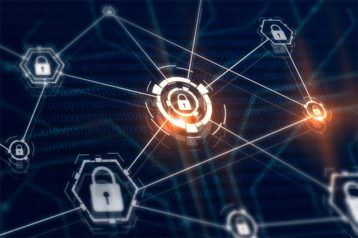
How it works: Computer network defense works by securing data systems and ensuring that no private information is leaked to individuals with malicious intent. Some of the defenses involved in this area of cybersecurity include demilitarized zones, firewalls, vulnerability scanners, and VPNs. Militaries and governments worldwide use the defenses to keep hackers away from highly important systems. If hackers gain access to such classified information, it could cause disaster in a country, threatening its national security against enemies like terror groups.
Aim: Secure organizations’ computer systems, especially governments and militaries, from leaking highly secretive information. Leaking this information has dire consequences, as it entails activities like troop movements, war plans, intelligence collection systems, operations orders, and the identities of undercover agents.
Purpose: To ensure that government and military information is kept secure, following the five key security goals, namely integrity, confidentiality, availability, assurance, and accountability.
Job Opportunities: The following job opportunities are available for individuals keen to make a career out of computer network defense:

- Computer specialist
- Network analyst
- Network engineer
- Computer support technician
- Networks and security engineer
- Cyber-security and information technology specialist
- Computer network exploitation analyst
To succeed in this field, one must possess the necessary qualifications. An ideal candidate in any of the positions mentioned above should have the ability to work as part of a team, react quickly to situations, and make solid decisions. The technical abilities that a computer network defense specialist should have include proficiency in network security, network analysis, operating system administration, and vulnerability/malware analysis. Also, professionals should be knowledgeable in packet analysis, programming, scripting, low-level protocols, and network forensics.
Tools: The following are network security tools important for the internet security strategy of any organization:

- Metasploit
- Wireshark
- Snort
- Nessus
- Splunk
- Cain and Abel
- Nagios
- Argus
- Aircrack
- Tcpdump
Importance: With network defense, organizations handling sensitive information are safe from harmful spyware. Shared data is kept secure under this cybersecurity specialization when it passes through secure network security infrastructure. Therefore, cyber-criminal activities like eavesdropping are limited because criminals can’t access the information passed through a complex and secure process. The process involves breaking down information into various parts, encrypting them, and passing them through independent paths.
Main function: To help government institutions reduce the risk of falling victim to the sabotage or theft of critical information.
6. Endpoint Protection
Endpoint Protection Definition: Endpoint protection, also known as endpoint security, is a system of network security management focusing on individual devices that use networks like mobile devices and workstations. It may also entail specific software packages involving network endpoints’ security.
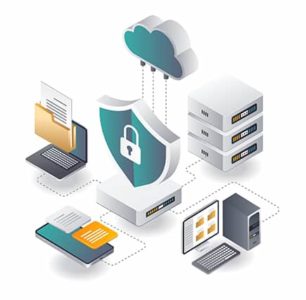
How it works: Endpoint security is also one of the major areas of cyber security. It is used in many organizations where employees use different devices to access the entity’s network. These devices include laptops, mobile phones (both android and iOS), computers, and tablets. When the company management allows employees to use these gadgets, they expose the entity to potential cyber-criminal risk. This is because the endpoints present in the devices may store or display sensitive company data. Therefore, businesses involve endpoint protection to mitigate these risks.
Note:
Vendor services, software packages, and internal strategies or protocols are major endpoint security features companies use to limit liability. Handling malware is the biggest concern in endpoint protection. Therefore, businesses need to identify this risk and minimize its impact on their operations.Organizations often deploy cyber security specialists to look for weak points in their networks and improve them for better computer security. They often do this with the help of custom endpoint security systems to handle different virtual network environments. The security systems are tailored to deal with complicated IT infrastructures that require different system protection and monitoring processes.
Aim: Endpoint protection aims at securing different aspects of an enterprise’s IT infrastructure network. The process involves a combination of protection, detection, and avoidance of cybersecurity threats through measures that monitor and stop intruder actions.
Purpose: To protect critical business systems, customer data, intellectual property, guests, and company employees from cyber-attacks, including phishing, malware, and ransomware. Without endpoint protection, businesses risk losing valuable data and suffer repeat attacks that threaten their survival.
Job Opportunities: Some of the important job opportunities related to endpoint security include the following:
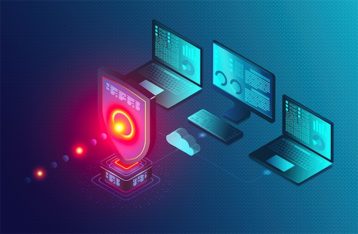
- Security engineer
- Endpoint protection administrator
- A senior cyber threat analyst
- Systems administrator
- Senior security researcher
- Endpoint security engineer
- Endpoint security operations specialist
- Engineering program manager
To land a job in any of the above posts, one must have a bachelor’s degree related to the technical field of cyber security. The individual should also have relevant certification to practice and be familiar with data protection systems.
Tools: Here are the top endpoint security tools to protect businesses from cyber-attacks:
- Crowdstrike Falcon
- Palo Alto Networks Cortex XDR
- Kaspersky Endpoint Detection and Response
- Bitdefender GravityZone
- F-Secure Rapid Detection and Response
- Trend Micro Apex One
- Symantec Endpoint Security
Importance: Endpoint protection is important to all kinds of businesses, regardless of size. As technology grows, so do the cybercriminals’ tactics of devising new ways to manipulate employees, penetrate networks, and steal confidential information. Therefore, business owners need to ensure they have reliable endpoint security services to prevent losing access to the data in their networks.
Other endpoint security benefits for businesses include:
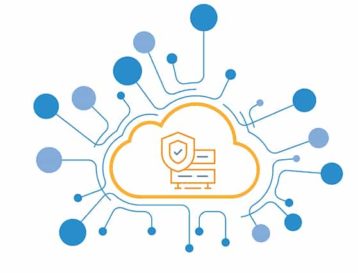
- Saving costs. Endpoint protection aids device performance and protects businesses against ransomware, ensuring that they don’t lose money trying to retrieve stolen data.
- Saving time. Endpoint protection saves time for company employees, as they allocate more time to achieving business objectives rather than handling cyber-attacks.
- Endpoint protection also complies with data security regulations that governments have set for businesses in various industries.
Main function: To secure entry points or endpoints on end-user devices, for instance, laptops, mobile devices, and laptops, against exploitation by malicious individuals and campaigns. Endpoint protection systems do this by swiftly discerning, evaluating, blocking, and curbing attacks in progress or before they happen.
7. Penetration Testing
Penetration Testing Definition: Penetration testing is also one of the main areas of computer security covered in this article. Also known as security or pen testing, penetration testing is a form of ethical hacking. It involves the intentional launch of mimicked computer attacks using tools and strategies designed to access or abuse networks, computer systems, applications, and websites.
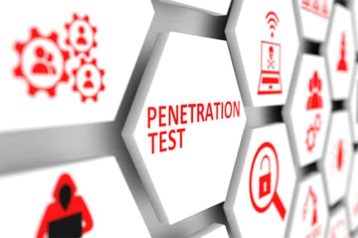
How it works: Penetration testing works by testing an entity’s security network. There are two distinct types of pen testing: BlackBox testing and whitebox testing. Blackbox testing involves testers attempting to enter the network from an external location. The testers see a network from a stranger’s perspective, presuming that they have no prior knowledge about how it operates.
On the other hand, Whitebox testing requires looking at a network with some previous knowledge about how it operates. For instance, someone working within an organization and has access to the company’s network conducts penetration testing following the Blackbox testing method.
The penetration testing process follows four phases. The first phase is network enumeration which involves getting an overall view of the network and its constituents. The testers usually gather information about the network in this phase, including connected devices and service hosts.
The second phase is vulnerability assessment. This requires various tests to identify common and unexpected breaches that may occur to the network.
The third phase is exploitation. This phase involves the tester attempting to exploit the system vulnerabilities identified in the second phase. Despite security features like passwords and firewalls, the pen tester will try to hack into the network based on its vulnerable points.
Finally, the reporting and repair phase. This phase involves the penetration testers giving recommendations to resolve the identified weaknesses and prevent future network exploitations.
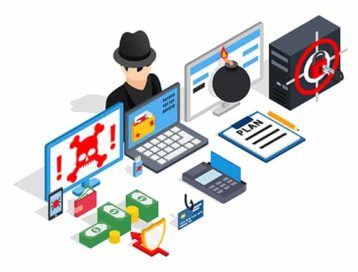
Aim: Using pen testing techniques together with specialized testing mechanisms to test the strength of a company’s regulatory compliance, its security measures, and employees’ security consciousness. Penetration testing also tests an organization’s ability to identify and respond to security threats and incidents as they occur.
Purpose: To identify susceptible issues on computer systems or networks so that security professionals can implement effective security controls to curb them.
Job Opportunities: The job opportunities related to this field of cyber security include:
- Cybersecurity assurance officer
- Information security analyst
- Network vulnerability analyst
- Penetration tester
- Cyber security specialist
To land a job in any of the above posts, one should have the relevant knowledge or work experience related to penetration testing. An individual should have technical knowledge of security testing, software development and coding, and security administration. Experience as a network administrator or engineer is also valuable.
Tools: Below is a list of the best penetration testing tools to help identify vulnerabilities in network security systems:
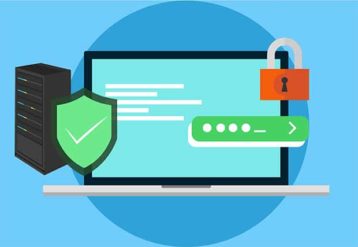
- Powershell-Suite
- Xray
- Hashcat
- Zmap
- Hydra
- Burp Suite
- Nikto
- John the Ripper
- SimplyEmail
- Metasploit
Importance: Penetration testing is an important aspect of cybersecurity for organizations. This is because they help personnel learn how to tackle cyber-attacks from malicious parties. Pen testing serves as some sort of a drill in an organization, and they serve as a wake-up call to organizations wanting to know if their security operations are effective or not.
Note:
If the security systems have vulnerabilities, pen-testing offers companies solutions to help them detect and prevent hackers. The solutions also help them effectively ward off any intruder that has gained access to the organization’s network.Main function: To identify security weaknesses in an organization’s policies and systems.
8. Internet of Things (IoT) Security
Internet of Things (IoT) Security Definition: The Internet of Things is a system of interconnected computing devices, objects, people, animals, and mechanical or digital machines. These entities receive unique identifiers (UIDs) and the ability to transmit data over a network without involving human-to-computer or human-to-human interaction. IoT security refers to the measures put in place to safeguard these cloud-protected services against cybersecurity threats. It is necessary to protect data as it transfers from IoT devices to the cloud location to minimize the threat of hackers compromising user accounts.

How it works: Smartphones play a significant role in IoT, often being used to control IoT devices in smartphone apps. A good example is using smartphones to turn off household lights when away from home. Many people choose to use their smartphones to switch on a limited number of their household bulbs to act as a deterrent to intruders. IoT also has its downsides in cybersecurity, prompting increased protection. Enter IoT security, a technology division that aims to safeguard connected networks and devices in the Internet of Things. So, what is the work of this cybersecurity domain?
Note:
An IoT security system doesn’t work in one particular way, but it entails using better measures to protect users from hackers’ tools and software. Measures include employing stronger password controls, encrypting data and coding IOT processes.IoT systems face significant cybersecurity threats for various reasons, including operating without human intervention. While this could be a great benefit, the limited human intervention makes it easy for a hacker to access the system. Also, hackers could eavesdrop on IoT systems and access confidential information because the components operate on wireless networks. Therefore, IoT security systems should have robust security to protect the systems, data, and networks from various cyberattacks. IoT manufacturers and developers need to engage cybersecurity professionals to understand how to place better cloud activity protections despite the absence of uniform IoT security standards.
Aim: IoT security aims to protect IoT devices and networks. It impacts the processes, measures, and technologies put in place to target the cybersecurity vulnerabilities in this sector.
Purpose: The main purpose of IoT security is to create an ecosystem where everything is interconnected to each other for an easier and safer way of living and transacting businesses.
Job Opportunities: IoT security career opportunities include the following areas:
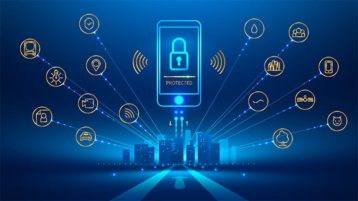
- Artificial intelligence
- Network and the networking structure
- User interface
- Embedded programs engineering
- Cyber security
- New device/hardware technology
- Sensors and actuator professionals
- Data analytics
Tools: Here are the top IoT tools in the market today:
- M2MLabs Mainspring
- Kinoma
- Flutter
- Node-RED
- Eclipse IoT Project
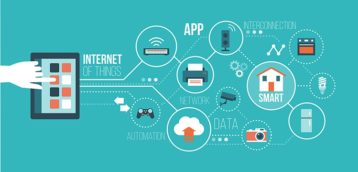
Importance: The Internet of Things is crucial for individuals or organizations to adopt smarter living or working methods. With IoT, individuals are more in control over their lives, preventing them from panicking over things they can simply leave IoT to take care of. Businesses also benefit from IoT, as it gives them valuable insights into the operation and performance of their systems.
IoT also facilitates cost-cutting. Companies shift to automated processes that are quicker and more efficient, thereby reducing costs. IoT also helps organizations to reduce waste and improve service delivery. With the Internet of Things, companies spend less when manufacturing and delivering goods. IoT also offers clarity into a business’ customer correspondence. Therefore, the businesses that use the system gain a competitive edge over those that don’t.
There should be secure IoT connectivity, software, and hardware for these systems to run successfully. It is important to improve IoT security to prevent companies from experiencing catastrophic losses due to hacking. Changing default passwords on IoT devices, keeping the software up-to-date, being alert on IoT identity spoofing, and using encrypted passwords are some of the important steps companies can take to improve IoT security.
Main function: Securing IoT-related data to promote privacy and functionality of IoT devices, networks, and systems.
9. Critical Infrastructure Security
Critical Infrastructure Security Definition: This is a cyber-domain security area dealing with the protection of networks, systems, and assets required to operate constantly. The systems, networks and assets are necessary for securing a country, its public health/ safety, and the economy.
How it works: Critical Infrastructure Security (CIS) analyzes components that need security considerations like Operation Technology (OT), Industrial Control Systems (ICS), and SCADA Systems. These components need protection so that cyber-attacks do not threaten the vital infrastructure under them.

Governments ensure strong security measures are in place, prioritizing disaster preparedness, response to attacks, and recovery of key infrastructure systems. Therefore, nations deploy several security measures to curb the vice of malicious cyber-attacks on important systems. For instance, military alliances like NATO consider classifying cyber-attacks on the key infrastructure of any of its member states as declarations of war. If such an attack occurs, NATO will respond by triggering a military response, complete with soldiers, tanks, and airplanes, as if it were a traditional attack.
Before it gets to that, cybersecurity experts deploy layered security solutions for endpoints. These solutions heavily depend on security technologies, both proactive and reactive, boosted by machine learning. The technologies that strengthen critical infrastructure security include next-generation EDR (Endpoint Detection and Response). EDR alerts Security Operation Centers (SOCs) to potential indicators of any data breach, hence activating a timely response to the threat before it causes serious damage.
Aim: Protecting nations’ critical infrastructure networks against attacks by malicious individuals.
Purpose: To strengthen critical infrastructure security systems against cyber-attacks.
Job Opportunities: The following job opportunities are associated with critical infrastructure security:
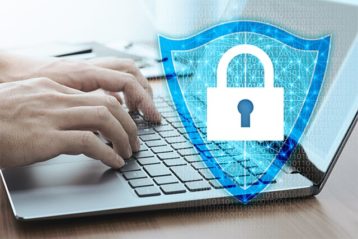
- Infrastructure security engineer
- Information security engineer
- Special security officer
- Application security consultant
- Intelligence analyst
- Datacenter security manager
- Site reliability engineer
- Technical security analyst
- Loss prevention specialist
- Cyber mitigation analyst
There are many critical infrastructure sectors that work under the posts mentioned above. They include, the energy sector, food and agriculture sector, chemical sector, emergency services sector and the IT sector, among others.
Tools: The NSRAM, Fort Future, CIMSuite, CIPDSS-DM, CARVER (Criticality Accessibility Recoverability Vulnerability Espyability Redundancy), and MUNICIPAL (Multi-Network Interdependent Critical Infrastructure Program for Analysis of Lifelines) are critical infrastructure security tools. Others include IEISS (Interdependent Environment for Infrastructure System Simulations), IIM (Inoperability Input-Output Model), CIDA (Critical Infrastructure Dependency Analysis Tool), and Athena.
Importance: The country’s important systems are constantly at risk from cyber security attacks. These systems include transportation networks, access to electricity, healthcare systems, and many other critical services. When such infrastructure is under threat, there is a risk of serious disruption to the country’s critical services. Global economies and their surrounding communities risk suffering from dire consequences if their important services are disrupted for even a few hours.
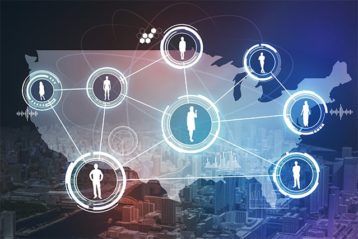
Therefore, critical infrastructure security helps bridge the security gap, as it helps protect the nation’s precious networks. Nations recognize and analyze the risks that could potentially threaten the integrity of their critical infrastructure networks. This helps them to identify possible solutions when and if the threats occur. The success of critical infrastructure security initiatives relies on the solutions used to implement and manage them in any country. The success of that initiative also heavily relies on solid partnerships that governments and commercial stakeholders build between themselves.
Main function: To identify all threats and hazards, both natural and man-made, that pose a great risk to the country’s functioning and infrastructure. Physical threats and natural disasters have long been identified as the greatest threats to key infrastructure. However, cyber-attacks on these systems are becoming more prominent, hence the need for critical infrastructure protection.
10. Secure DevOps
Secure DevOps Definition: Secure DevOps is a set of tools, practices, and cultural approaches that combine IT operations (Ops), software development (Dev), and security (Sec) to increase a company’s ability to provide apps and services at high speeds.
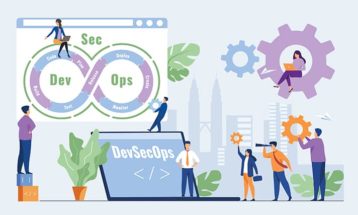
How it works: Operations and development engineers work together to practice DevOps in the entire lifecycle of a project. The life cycle involves every step of a project, from design to development, production, release, and support. The team sticks together and strives to achieve the intended goal of the project they are working on. Individuals who possess operation and development skills work as a team and use various tools for Continuous Integration and Continuous Delivery (CI-CD). They also use monitoring tools to respond to customers on time and fix bugs or system issues wherever they arise.
Aim: To strongly integrate monitoring and automation at all the lifecycle stages involved in software development, from assimilation, testing, issuing to distribution and infrastructure management.
Purpose: To combine practices, cultural philosophies, and tools that increase a company’s ability to deliver services and apps at high velocity.

Job Opportunities: One can become a DevOps engineer and work with IT developers and other business professionals to improve communication between software developers and operations managers. A DevOps engineer manages the production, development, and improvement of software and coordinates how it is deployed to the end-user. Also, they ensure that the company releases software updates quickly and integrates customer feedback. The skills that one requires to be a DevOps engineer include technical skills and a strong understanding of the need to cooperate when exchanging information in an organization.
Tools: Some of the tools used in DevOps security include:
- OSSEC
- Charles Proxy
- Burp Proxy
- Signal Sciences Web Protection Platform
- LogRhythm SIEM
- OWASP Zed Attack Proxy
- Venafi Trust Protection Platform
- Checkmarx AppSec Accelerator
Importance: DevOps is important for businesses, as it avails the following benefits to them:
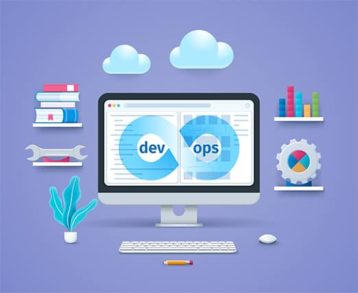
- It reduces incidences of human error, as most of the operations are automated.
- DevOps increases work speed for teams, increasing product delivery.
- The different areas of DevOps cement a business’ place at the top of the industry, edging competitors in the market.
- It reduces downtime and confines operations within minimum time limits.
- It updates changes in the production schedule of a company.
- It enables the company to control the security configuration by following the DevOps model and using network infrastructure as code.
- It facilitates proper risk management. IT teams in a firm can use DevOps to spot risk factors early in the application lifecycle stages, enabling them to set up quick fixes to prevent project stalling.
Main function: To compel businesses to deploy DevOps best practices in their day-to-day operations. The software industry is very competitive in this era, so companies should adopt best practices to attract and retain stakeholders and customers. Therefore, companies should use Automation and Artificial Intelligence to stay on top of the industry.
What are the Importances of Each Branch of Cyber Security?
Different forms of cyber security exist today, including:
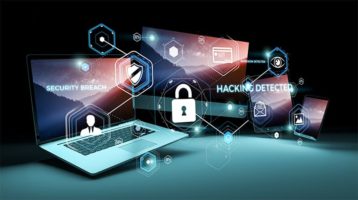
- Intrusion detection
- Endpoint protection
- Network defense
- Digital forensics and incident response
- Governance, risk, and compliance
- Application security
Each of the above branches is important to cyber security, their uses ranging from developing policies to curbing cyber-attacks. The cybersecurity industry is growing so rapidly, hence the need for the above forms, whose functions are listed as follows:
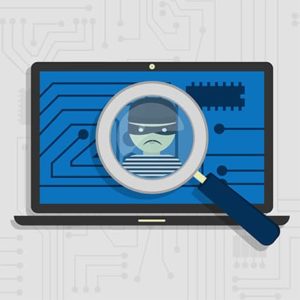
- Intrusion detection. IT specialists use intrusion detection programs to monitor computer networks for suspicious hacker activities, for instance, multiple attempts to sign in to an account.
- Endpoint protection. Specialists in this branch of cybersecurity use endpoint protection to ensure that devices enabled with the Internet of Things (IoT) are not at risk from cyber-attacks.
- Network defense. IT specialists use network defense to protect, analyze, monitor, detect, and respond to suspicious activities on a network.
- Digital forensics and incident response. Individuals use it to investigate and analyze compromised scenes to determine how a crime occurred. Forensics teams use the data they collected from a compromised system as evidence against a suspect in a court of law.
- Governance, risk, and compliance. This form of cybersecurity helps individuals develop standards, monitor compliance with regulatory demands, and assess risks.
- Application security. Individuals use it to test applications for any vulnerabilities. If they detect any weaknesses, they fix them before releasing the app into the software market.
How Can You Choose the Area of Cybersecurity to Work in?
One can work in any network security domain provided they have the relevant skills and the passion that organizations or businesses require. Cybersecurity jobs mainly revolve around three roles: testing security, engineering defenses, and cyberattack responses. Large corporations usually have entire teams that handle each of these roles. However, smaller organizations have a limited budget. Therefore, the company may assign one person all the above roles if they know how to handle them.
The primary skills that employers look for when hiring a cybersecurity professional include the following:

- Knowledge of regulatory compliance requirements and how they work
- Knowledge of common cyber-attacks
- Risk-analysis skills and knowledge
- Risk management using controls
- Knowledge of explaining risk and compliance in corporate terms.
Which Area of Cybersecurity Is the Most Important?
Critical Infrastructure Security (CIS) is arguably the most important area of cyber security. CIS ensures that the important domains in cybersecurity responsible for key operations are protected from cyber-attacks. Security breaches on a country’s most important infrastructure pose a great risk and threaten the stability of a country.

